SPECIES PROFILE: NEPENTHES DIATAS
A stunning yet somewhat obscure species from Aceh,Sumatra
A few years ago, Nepenthes diatas was one of those species I was vaguely aware of but had little else to say about. I regarded it with the same sense of disinterested recognition I might confer upon a recurrent pimple or, say, a Taco Bell I drive past every day—something floating at the periphery of my mind that I otherwise had no intention of engaging with (my saga with Taco Bell is best saved for another day).
I can’t recall exactly why this was the case, but I think it may have been because most of the photos I had seen of N. diatas up to that point were not particularly appealing to me. Although toothy, the pitcher peristomes seemed small, and their size was apparently not impressive. I may have been biased, too, since the more famous Sumatran Nepenthes like N. jacquelineae, N. lingulata, N. jamban, and N. inermis all have fantastically bizarre pitcher morphologies. Poor N. diatas appeared dull in comparison.
Despite that, I made an impulse buy of a small N. diatas in 2018 because it was fairly cheap at the time. The plant was perhaps two to three inches in diameter and unremarkable in all other aspects, as are most Nepenthes at that size. I took a few photos to document and promptly forgot about it.
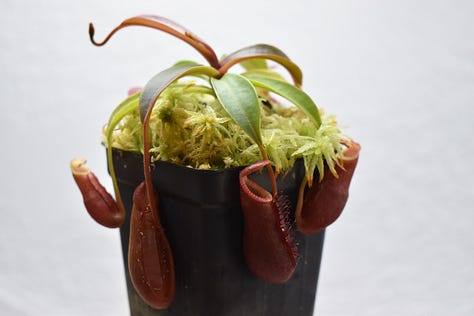
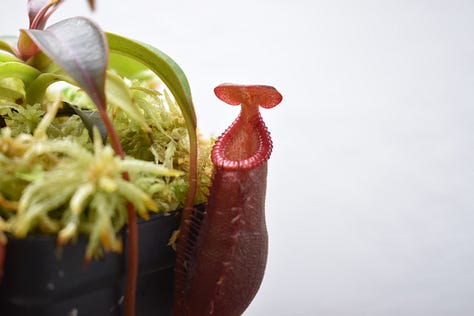

The plant was a steady and relatively quick grower. Fast forward two years, and it was producing pitchers about three to four inches tall. More importantly, while the peristome still looked relatively skinny like the photos I had seen online, it was adorned both with numerous teeth and stripes. What a unique combination! My interest was piqued and I began to regret my earlier dismissal of this species.

By 2022, my plant had further matured and began producing fully adult pitchers. It was immediately apparent that I had been underestimating what N. diatas was capable of. Not only had the peristomes maintained their color and teeth, they had also broadened and increased in depth. It almost seemed that I was looking at a hybrid of N. villosa!
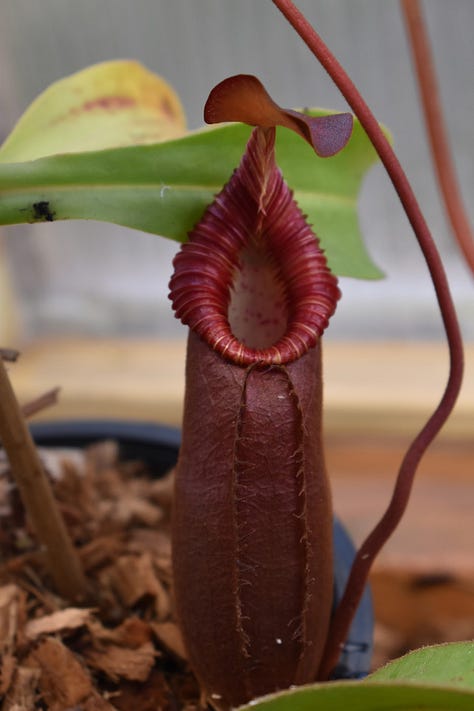

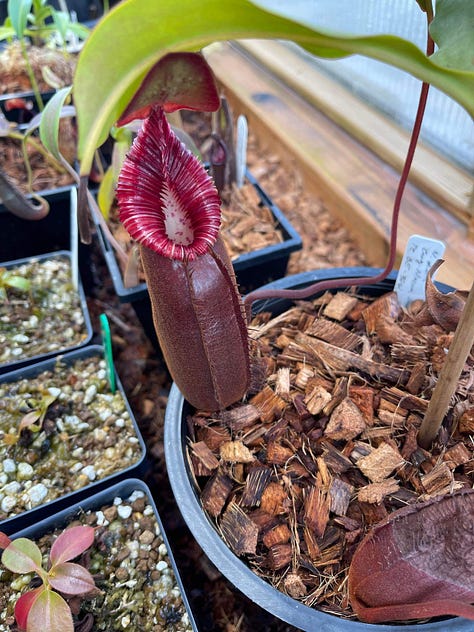
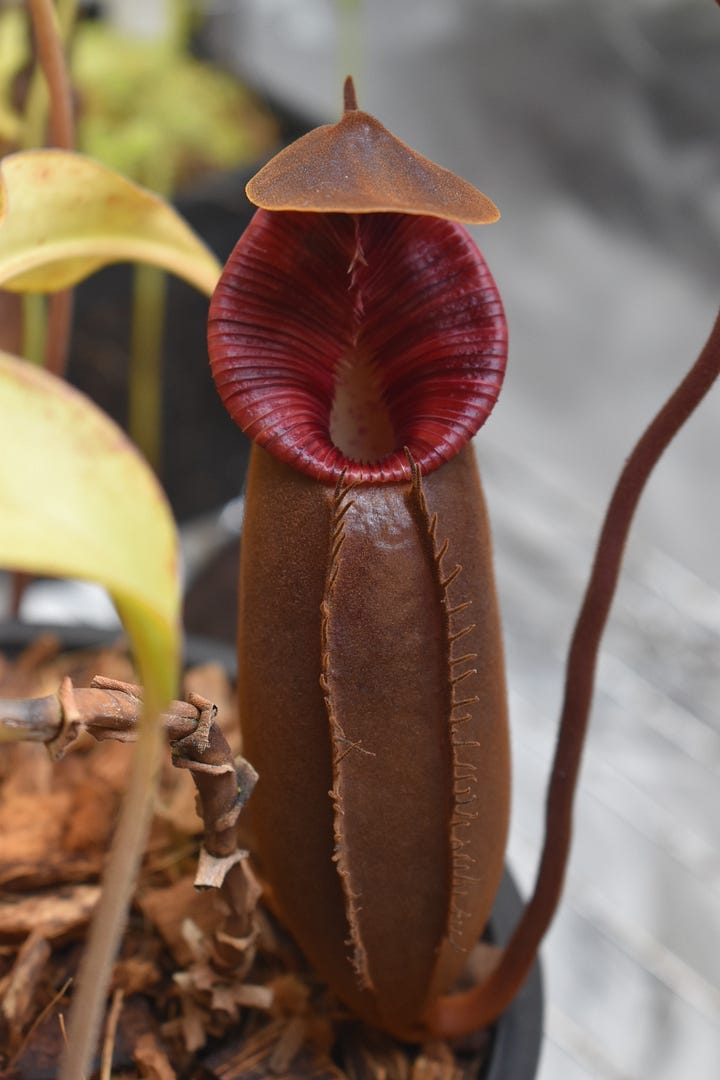
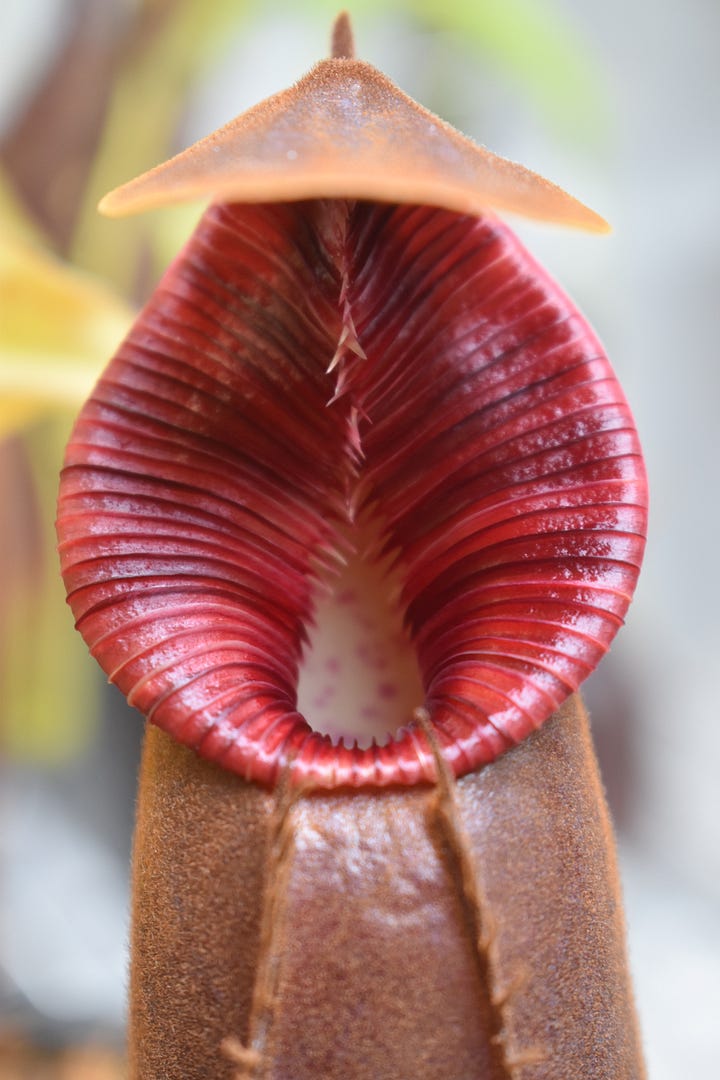

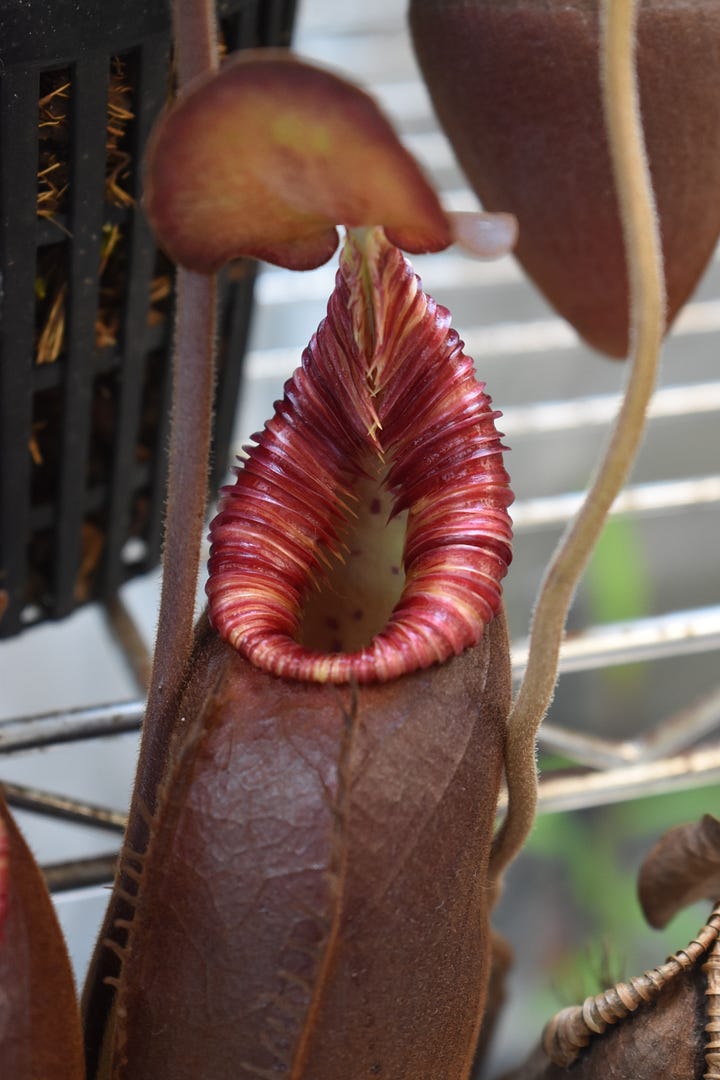
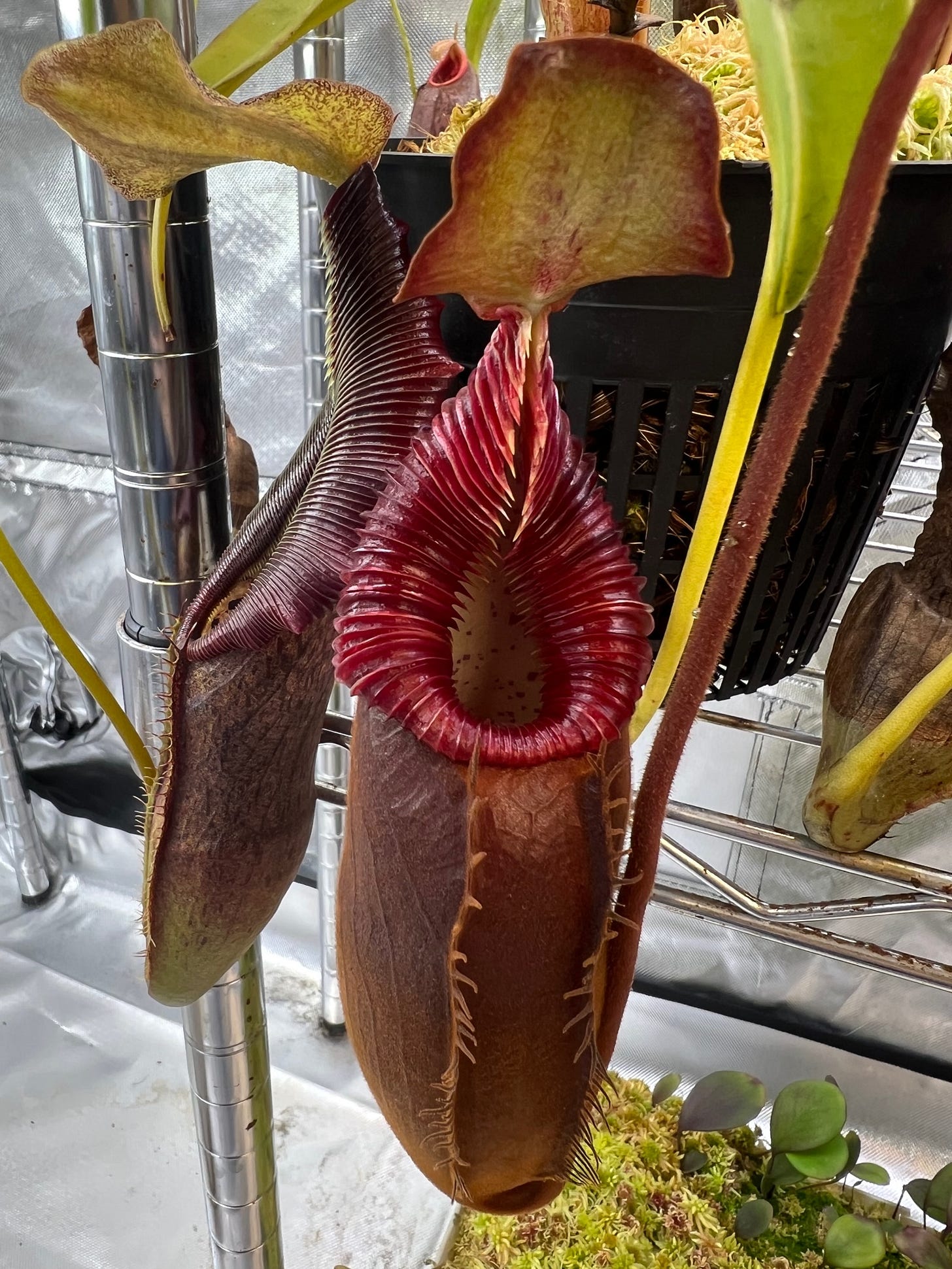
I think there is a a good amount of intraspecies diversity that is probably not being appreciated due to the relative scarcity of N. diatas in collections. My particular clone (Borneo Exotics BE-3861) looks vastly different compared to photos of another batch from the same distributor, BE-3056 (right). It appears that I have no choice but to buy more plants to fully appreciate this species. How terrible!
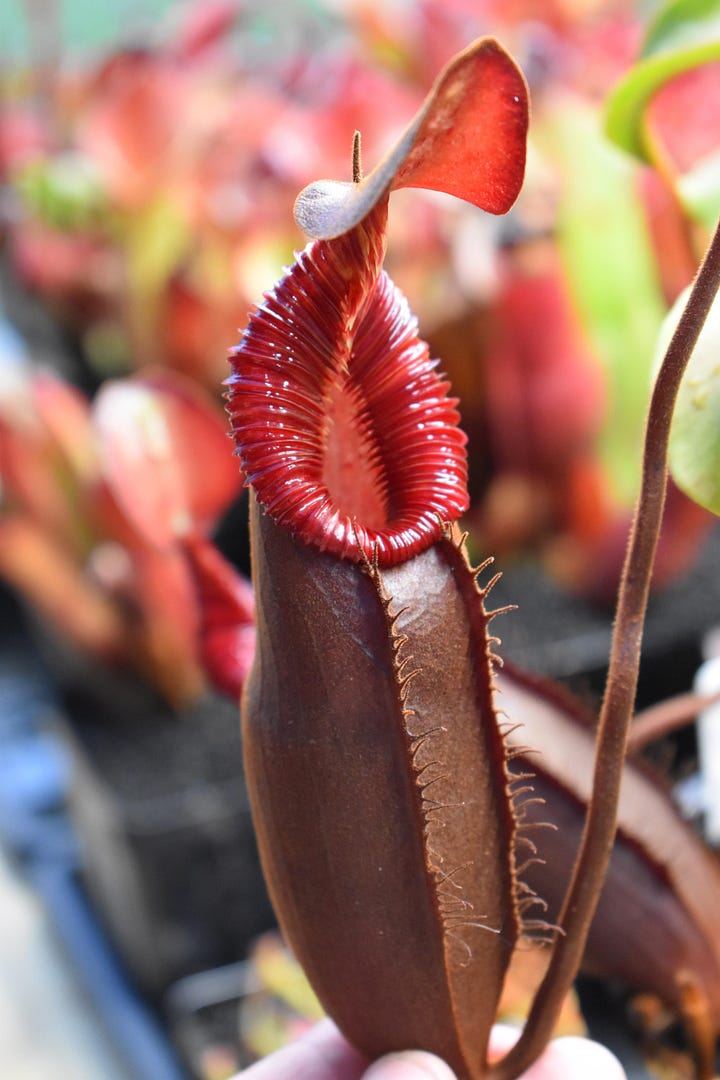
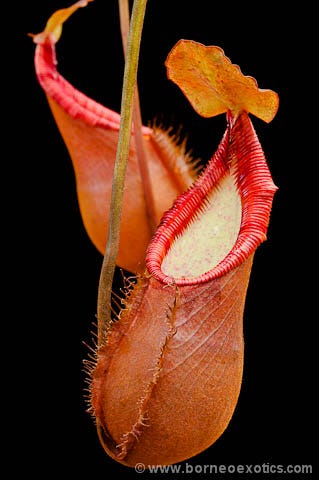
Botanical History
N. diatas was formally described in January 1997 by famed Nepenthes taxonomists Matthew Jebb and Martin Cheek in their monograph “A skeletal revision of Nepenthes (Nepenthaceae).”1 The type specimen was collected on Gunung Bandahara in the province of Aceh in northern Sumatra, where the species occurs at altitudes of 2400-2600m in montane scrub and mossy forests. Interestingly, only upper pitchers could be collected at that time. A member of the N. singalana complex, N. diatas is closely related to fellow Sumatran species N. singalana, N. densiflora, and N. spathulata.
The etymology of the specific epithet derives from the Indonesian word “diatas,” meaning “on top.” This is in reference both to the species’ ecologic restriction to mountaintops and geographic restriction to northern Sumatra.
N. diatas was classified as Least Concern during its latest assessment in the IUCN Red List of Threatened Species in 2014. The population is reported to be stable at around 5000 mature individuals and unlikely to experience disturbance due to its remoteness.2
The Borneo Exotics clone BE-3861 is reported in the distributor catalogue as originating from Gunung Masurai, which is in southern Sumatra. I am unaware if this is a mistake or if additional occurrences of N. diatas have been discovered.

Cultivation
The 2400-2600m altitudinal distribution of N. diatas technically places it within the range of ultrahighlanders. However, it seems to be more tolerant of warmer temperatures than pickier ultrahighlanders like N. villosa and N. macrophylla. My plant has consistently performed well in standard highland conditions with daytime temperatures around 70-80F and nights falling to 55-65F depending on the time of year. I am interested in seeing if this species could be adapted to intermediate conditions as well.
High humidity is likely necessary for proper pitcher development. The tendrils are sensitive to local disturbances and developing pitchers may abort when conditions around the plant are changed abruptly.
The species is not particularly picky about growing media. Any standard, well-draining, acidic mix for highland Nepenthes should do; my plant has grown well in 100% coco chips.
Light requirements are similar to other highland Nepenthes that grow near tree tops or semi-exposed areas. In bright light, the pitchers darken to a deep burgundy.
Jebb & Cheek. (1997). A skeletal revision of Nepenthes (Nepenthaceae). Blumea, 42(1), 33-35.
IUCN. 2018. The IUCN Red List of Threatened Species. Version 2018-1. Available at: www.iucnredlist.org.


![Nepenthes diatas from Sumatra has gaping maws lined with vicious, jagged teeth. This species should be on every highland Nepenthes grower's list! [Gng. Masurai, BE-3861] : r/SavageGarden Nepenthes diatas from Sumatra has gaping maws lined with vicious, jagged teeth. This species should be on every highland Nepenthes grower's list! [Gng. Masurai, BE-3861] : r/SavageGarden](https://substackcdn.com/image/fetch/$s_!20Sz!,w_1456,c_limit,f_auto,q_auto:good,fl_progressive:steep/https%3A%2F%2Fsubstack-post-media.s3.amazonaws.com%2Fpublic%2Fimages%2Faac967b3-b8cd-4cc5-ad79-26342739e893_640x960.jpeg)